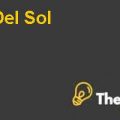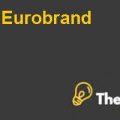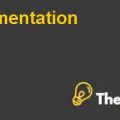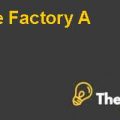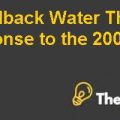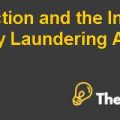
COMPANY’S BACKGROUND
Grolsch, started as a brewery company in Groenlo near the German border, is the world’s 2nd largest brewer and 21st largest global brand. In the late 1800s, the business operations of brewery come under the control of Theo J.D Groen and he introduced Grolsch’s iconic, a ceramic swing top bottle. The company is incorporated with two fully owned subsidiaries such as Grolsch Bierbrouweiji Nederland and Grolsch International. In 1984, Grolsch filed an initial offering on the Amsterdam stock exchange.
The Asian financial crisis has significantly affected the Eastern Europe and hurt the company’s profits. Therefore, the company proposed a strategy to expand its market in the international countries such as the UK, U.S, France, Australia, Canada, and New Zealand. Moreover, the strategy of the company is to expand its market in the Latin America and Africa, to increase its company’s competitive advantage. From 2002 to 2007, the company successfully secured its revenue and prepared to pursue in the international market. The net sales increased from 265 million to 332 million and gaining a percentage of 20.2.
The top-line strategy of the company is gaining full growth in the beer market. Moreover, the bottom-line strategy of the company is to focus on cost structure and efficiency, to minimize the operational and financial costs in the future. Apart from that, the company emphasized in establishing a premium product and built a strategy to develop a differentiated position in the international brewery market. The objective of the company is providing a quality product to its customers and maintaining its unique taste to maximize the customer’s satisfaction.
In 2002, the company purchased an alliance with German brewer such as Warsteiner. Moreover, it built an internal training program known as Craftsmanship in mastery, to reinforce the legacy of high-quality beer. Apart from that, the company should focus to initiate a state-of-the-art and environmentally friendly technology in its new brewery. The distribution strategy for the company is that the beer transported by the truck within the European Union and by shipping to other markets.
Furthermore, the major competitor of Grolsch is Heineken that gained huge market share in the brewery marketplace. Moreover, there are many other local competitors that were giving strong competition to the Grolsch. Therefore, the company needed to create a wider global network to stay in the competition, and increase its customers’ advantage.
VISION
The company believes in the strength of beer in the drinks market.
MISSION
The mission of the company is to break through the mainstream and restore beer premium status.
PROBLEM STATEMENT
Before analyzing the Grolsch global expansion strategy and its approaches to gain market share in the international market. It is important to understand the beer company from the strategic point of view. However, this case is about the global strategy and execution and in order to propose a strategy, it is important to conduct a SWOT analysis and PEST analysis.
The SWOT analysis will help the company to identify the strengths and weaknesses and admire opportunities and threats. Moreover, the PEST analysis will help the company to understand the macro-environmental factors such as current business conditions, market trends, competitors and direction for future operations. These analyses will help to drive possible solutions and approaches that will guide to set an objective to provide possible recommendations.
GROLSCH’S EXPANSION STRATEGY
Grolsch started its operation in the 17th century and faced less demand in Netherland, which led the company to face financial losses in the beginning. Moreover, at the same time the company’s rival Heineken was increasing its market share in the international market. Therefore, the company initiated two strategies such as to maintain stagnant position in the home market or to expand its market internationally.
At the beginning, the company chose the first strategy is to maintain a stagnant position in the home country. The company recognized the feasibility of increasing its revenue and profits is to sell its beer in the home country and build more customers' advantage. However, the company failed to achieve its target with the current strategy, and the sales of the company began to shrink in the 1970s.
Therefore, the company decided to expand its operations in the international market, to gain not only the maximum revenue, but also to steal the market share of the foreign competitors. Moreover, the second reason to expand its market is Heineken’s success in Netherland that achieved a maximum market share, and further strengthened its position domestically as well as internationally. This strategy motivated Grolsch to expand its beer market in the international countries.....................
This is just a sample partial case solution. Please place the order on the website to order your own originally done case solution.

